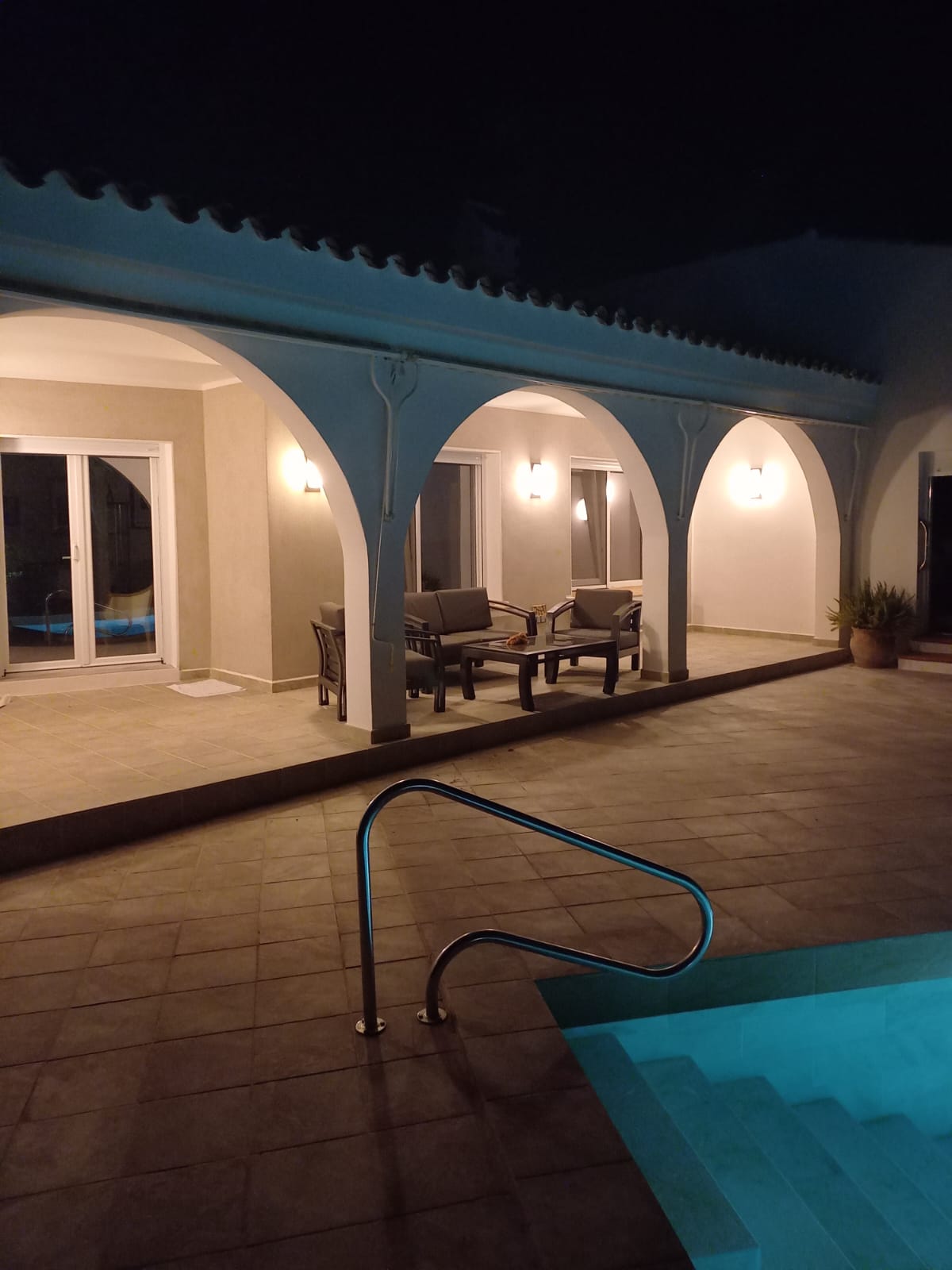Lime plaster, a type of natural plaster, has been used for thousands of years in the construction of buildings and artistic works. It is a durable, breathable, and eco-friendly material that offers a unique aesthetic appeal. This glossary article delves into the intricate details of lime plaster, its historical use, composition, application, and benefits, among other aspects.
Understanding lime plaster requires a comprehensive exploration of its nature, its components, and the processes involved in its creation and application. This article aims to provide an in-depth understanding of lime plaster, its role in the world of natural plasters, and its relevance in today’s construction and artistic practices.

Historical Use of Lime Plaster
Lime plaster’s history is as old as human civilization itself. It has been found in archaeological sites dating back to 7000 BC, such as the ancient city of ‘Ain Ghazal in Jordan, where lime plaster statues were discovered. Lime plaster was extensively used in Roman, Greek, and Egyptian civilizations for both construction and decorative purposes. The use of lime plaster continued through the Middle Ages and the Renaissance, particularly in fresco painting. In more recent history, lime plaster was commonly used in the 18th and 19th centuries for interior and exterior wall finishes. Despite the advent of modern materials, lime plaster remains a popular choice for restoration projects and eco-friendly constructions.Use in Ancient Civilizations
The ancient Egyptians were known to use lime plaster in their pyramids and temples. They recognized the material’s durability and resistance to weather, making it ideal for their monumental structures. Similarly, the Greeks and Romans used lime plaster extensively in their buildings, sculptures, and frescoes, appreciating its versatility and aesthetic qualities. In the Indus Valley Civilization, one of the world’s oldest urban civilizations, lime plaster was used in the construction of houses, public buildings, and urban infrastructure. The use of lime plaster in these ancient civilizations demonstrates its long-standing value and versatility as a construction and decorative material.Use in Modern Times
In modern times, lime plaster has seen a resurgence in popularity, particularly in the field of restoration and conservation. Its ability to ‘breathe’ and regulate humidity makes it an ideal material for restoring historic buildings, as it can help prevent moisture-related damage. Moreover, the growing interest in sustainable and eco-friendly construction practices has led to an increased use of lime plaster. As a natural material, lime plaster has a lower environmental impact compared to synthetic materials, making it a preferred choice for green building projects.Composition of Lime Plaster
Lime plaster is a mixture of lime, sand, and water. The lime used in the mixture can be either hydraulic lime or non-hydraulic lime, each offering different properties and uses. The sand provides bulk and strength to the plaster, while the water acts as a carrier and activator for the lime. The ratio of these components can vary depending on the desired properties of the plaster. For instance, a higher proportion of lime can result in a softer, more flexible plaster, while a higher proportion of sand can make the plaster harder and more resistant.Hydraulic vs Non-Hydraulic Lime
Hydraulic lime and non-hydraulic lime are the two main types of lime used in lime plaster. Hydraulic lime is set by hydration, meaning it reacts with water to harden. This type of lime can set underwater and is more resistant to frost, making it suitable for exterior applications. On the other hand, non-hydraulic lime sets by carbonation, reacting with carbon dioxide in the air to harden. This type of lime is slower to set and requires exposure to air, but it offers greater flexibility and breathability, making it ideal for interior applications and historic restorations.Role of Sand and Water
Sand plays a crucial role in the composition of lime plaster. It provides bulk, reduces shrinkage, and increases the strength of the plaster. The size and shape of the sand grains can affect the texture and finish of the plaster. For instance, fine sand can produce a smooth finish, while coarse sand can create a rough, rustic look. Water is the third essential component of lime plaster. It acts as a carrier for the lime and sand, allowing them to be mixed and applied. Moreover, water plays a crucial role in the setting process of the plaster, particularly for hydraulic lime which requires water to harden.Application of Lime Plaster
The application of lime plaster involves several stages, including preparation of the surface, mixing of the plaster, application, and curing. Each stage requires careful attention to ensure a successful result. The process can be labour-intensive and time-consuming, but the end result is a durable, breathable, and beautiful surface. While the application of lime plaster can be done by a skilled DIYer, it is often best left to professionals, particularly for large or complex projects. The nuances of the material and the application process require experience and expertise to ensure a high-quality finish.Surface Preparation
Before applying lime plaster, the surface must be properly prepared. This involves cleaning the surface to remove any dust, dirt, or loose material. If the surface is very smooth or non-absorbent, it may need to be roughened to ensure good adhesion of the plaster. In some cases, a primer or bonding agent may be applied to the surface to improve adhesion. It’s also important to dampen the surface before applying the plaster, as this helps to prevent the water in the plaster from being absorbed too quickly, which can cause the plaster to dry out and crack.Mixing and Application
The mixing of lime plaster involves combining the lime, sand, and water in the correct proportions. The mixture is then left to mature for a period of time, which allows the lime to fully hydrate and the mixture to become more workable. Once the plaster is ready, it is applied to the surface in layers, with each layer being allowed to dry before the next is applied. The thickness of the layers and the number of layers applied can vary depending on the desired finish and the specific requirements of the project. After the final layer is applied, the plaster is often polished or burnished to achieve a smooth, glossy finish. This is typically done using a trowel or a special tool called a float.Benefits of Lime Plaster
Lime plaster offers a range of benefits that make it a preferred choice for many construction and restoration projects. One of its key advantages is its breathability, which allows moisture to evaporate from the surface, preventing dampness and mould growth. This makes lime plaster ideal for old buildings and climates with high humidity. Another benefit of lime plaster is its flexibility. Unlike cement-based plasters, lime plaster can accommodate slight movements in the building without cracking. This makes it particularly suitable for old buildings, which often have irregular surfaces and are prone to movement.Eco-Friendly Material
Lime plaster is considered an eco-friendly material due to its low embodied energy and its ability to absorb carbon dioxide from the atmosphere during the curing process. This makes it a sustainable choice for construction, contributing to the reduction of greenhouse gas emissions. Moreover, lime plaster is made from abundant and naturally occurring materials, which further enhances its environmental credentials. The use of lime plaster can therefore contribute to the achievement of green building certifications and the promotion of sustainable construction practices.Aesthetic Appeal
Aside from its practical benefits, lime plaster also offers a unique aesthetic appeal. It has a soft, natural look and can be finished in a variety of textures, from smooth and polished to rough and rustic. The plaster can also be pigmented with natural dyes to achieve a range of colours. Furthermore, lime plaster ages gracefully, developing a rich patina over time. This gives buildings a timeless, classic look that is difficult to achieve with modern materials. The aesthetic qualities of lime plaster make it a popular choice for both traditional and contemporary designs.Conclusion
In conclusion, lime plaster is a versatile, durable, and eco-friendly material that has been used for thousands of years. Its unique properties make it ideal for a range of applications, from restoration and conservation projects to new constructions. With its combination of practical benefits and aesthetic appeal, lime plaster continues to be a relevant and valued material in the world of natural plasters. Whether you’re a professional builder, a DIY enthusiast, or simply someone interested in the world of natural plasters, understanding lime plaster can open up new possibilities and inspire creative solutions. So, the next time you’re considering a construction or renovation project, why not consider the timeless beauty and enduring qualities of lime plaster?

